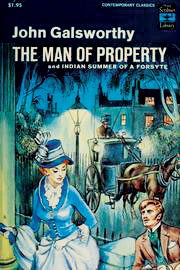![]() The Front Porch prints book reviews, rotating to a different local library or bookstore every month. This month’s book reviews are by volunteers at the Park Hill Community Bookstore, 4620 E. 23rd Avenue.
The Front Porch prints book reviews, rotating to a different local library or bookstore every month. This month’s book reviews are by volunteers at the Park Hill Community Bookstore, 4620 E. 23rd Avenue.
An Introduction to Haiku by Harold G. Henderson
Reviewed by John Krause
Summer—when the living is said to be easy, and days lazy—has somehow been connected in the book world with “page-turners”—books that invite rapid reading. But it might just as well be a time for moments of quiet contemplation like those at the heart of haiku poetry.
Among the many books of and about haiku, this is one of the best. Like its subject, it is brief, compact and insightful.
A student can learn about the form, difficulties in translation and Japanese masters. A casual reader can breeze through (gently, one would hope) and find samples such as this from Ryota: “They have the guise/of being married just today/—these two butterflies.” For either, time well spent.
The Seven Wonders Book 1: The Colossus Rises by Peter Lerangis
Reviewed by Isabel Kuhl
The Colossus Rises, the first book in the Seven Wonders series written for ages 8–12 is one of those books that someone could read over and over again and never feel like they are reading the same thing. Written by Peter Lerangis, also the author of the 39 Clues series, this book is about a boy named Jack McKinley. When Jack collapses in the middle of a road, he awakens in a strange place unknown to most people. The man who runs the place, Professor Bhegad, informs Jack about a deadly genetic trait he inherited from a prince of a long-lost civilization. Jack and his newfound friends have to find seven loculi before the antagonists do if they want to be cured and to save the world.
The Man of Property by John Galsworthy
Reviewed by Jack Farrar
 The Man of Property is the first of the famous series of books that John Galsworthy wrote about the Forsyte family. It is a wickedly sarcastic chronicle of the rise of the British upper-middle class in post-Victorian, pre-World War I England. In the 1970s, a PBS production of the Forsyte Saga won numerous awards and had a fervent following, much like Downton Abbey.
The Man of Property is the first of the famous series of books that John Galsworthy wrote about the Forsyte family. It is a wickedly sarcastic chronicle of the rise of the British upper-middle class in post-Victorian, pre-World War I England. In the 1970s, a PBS production of the Forsyte Saga won numerous awards and had a fervent following, much like Downton Abbey.
Galsworthy skewers the pomposity and self-importance of the British well-to-do, but he also shows a good deal of sympathy for those innocently caught up in its hypocrisy and ruthless social ladder-climbing. The first sentence of the book sets the characters perfectly: “Those privileged to be present at a family festival of the Forsytes have seen that charming and instructive sight—an upper middle-class family in full plumage.”
The principal characters in The Man of Property are Soames Forsyte, who is so consumed with possessions, success and status that he can imagine no other approach to happiness; and Irene, his wife, who has been forced to wed Soames for complicated reasons, and is his emotional opposite. Their marriage is lifeless and without passion, but they have to endure it in order to avoid societal scorn.
Galsworthy is regarded by many critics as the foremost literary voice of his age, for good reason.


0 Comments